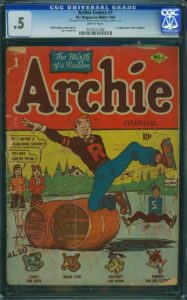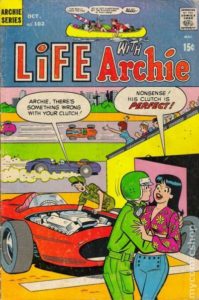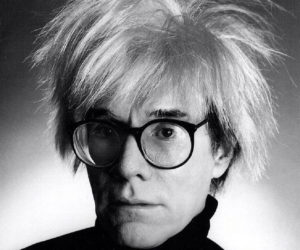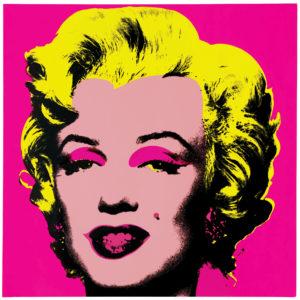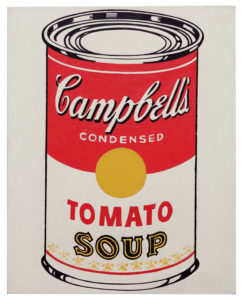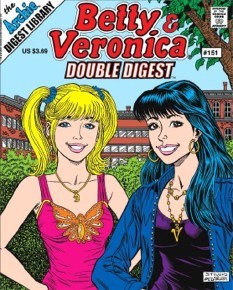
Despite the sameness of Archie and his friends, they have reacted to the times, albeit gently. The latest dances are always featured, Betty and Veronica are always on fashion’s cutting edge, and even modest excursions into movements like beatniks, hippies, and punks were taken.
But despite that, Archie fans knew that nobody was going to die, a la Captain America, or no quantum leaps in character depictions would ever be taken.
Until December of 2006, that is.
An edition of Betty and Veronica Double Digest came out that month with the girls redrawn to look more human. It was an “experiment” by the publishers to gauge reader reaction.
It was about as popular as passed gas in an elevator.
Betty and Veronica were perfect 10’s long before Bo Derek. They were drawn simply, but their beauty was manifested immaculately in that simplicity. Seeing them drawn in detail was simply horrifying to long-time fans.
They quickly got enough reader reaction to make a statement shortly after that the new look would NOT be tried again.
Indeed, a standardized look to the characters was established in the late 1940’s. The original Archie bore more of a resemblance to Little Archie than his present-day self. He even had Alfred E. Neumanesque buck teeth.
In 1947, when Bob Montana began producing the newspaper strip, his look stabilized. It was cemented in place in 1957 by artist Dan DeCarlo. Except for the aforementioned deliberate attempt otherwise, the characters are instantly recognizable over six decades of publication. And that’s how we fans like it.
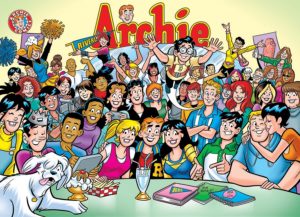
The relationships among the characters are consistent as well. Archie prefers Betty’s down-to-earth personality, but he finds it difficult to ignore Veronica’s beauty and bucks. Moose’s girl is Midge, and anyone who thinks otherwise is in BIG trouble. Big Ethel has the hots for Jughead, who occasionally gives in to her advances. Reggie is the thorn in Archie’s side, occasionally proving to be a friend, but most often a snake in the grass. Mr. Weatherbee is the stereotypical clueless figure in charge, perhaps the one who originated all of his imitators in every high school movie. Dilton Doily is the brilliant nerd. He scores straight A’s in Mr. Flutesnoot’s class.
Archie has long sought to escape the comic book pages. There was an Archie radio show on from 1943-1953. A 1990 TV movie was made, showing real actors playing older versions of the gang. It sank out of sight quietly. However, a cartoon series that ran from 1968-1978 was a much larger success. It even spawned Top Forty songs! The Archies were a group of studio musicians that paradoxically scored hits as cartoon characters. Weird, interesting stuff.
But even though all of those series are gone, now, Archie and the gang continue to live their everyday lives on the pages of comic books. The vast wealth of material from over the years means a never-ending supply of reprintable stories, along with new ones turned out every month.
And we Boomers like finding something from our childhoods that still exists today in essentially the same form that we remember.
